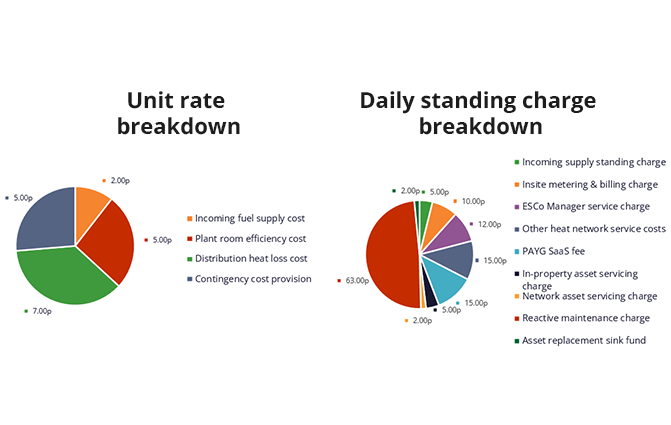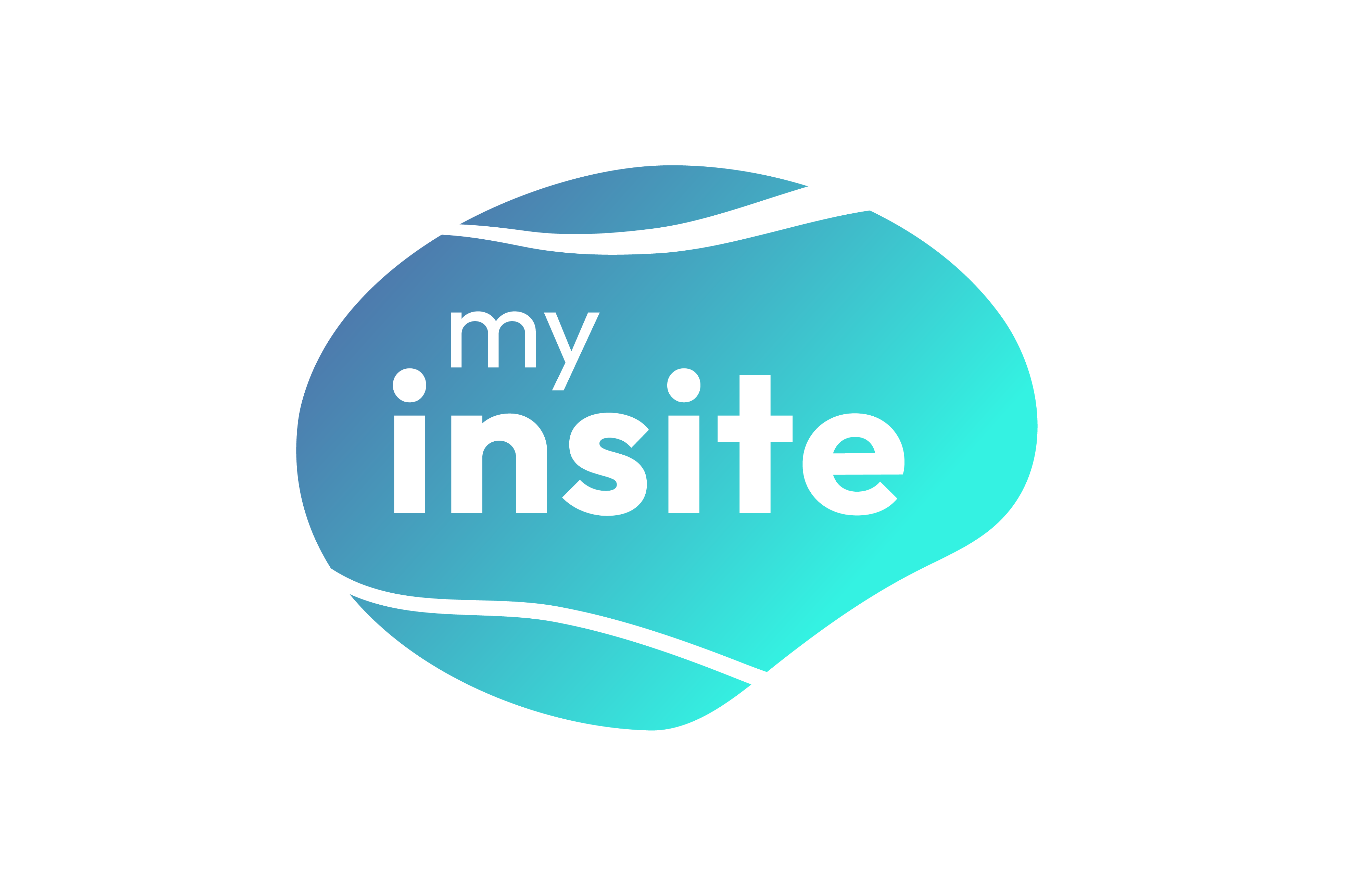
How is my energy bill calculated? – A breakdown of heat network tariffs
25th August 2020Written by: Carly Freeman, Head of Customer Services
Updated on: 19th June 2024
We understand you may be used to a home with an individual gas or combi boiler. After all, 23 million homes in the UK have one. But heat networks are becoming more and more prevalent across the nation.
As you’ve moved into a property connected to a heat network, you may not fully understand what this actually means to you, and how it affects your energy bills and tariffs.
Don’t worry. We’re here to help. In this article we’ve tried to break down the complexities of heat network tariffs.
Depending on when the last tariff change was performed for your scheme, you may also find a breakdown specific to your scheme on our 'Your home' page.
Download your ‘tariff breakdown’ document >
Contents
What is included in heat network energy bills and tariffs?
A breakdown of your daily standing charge
Other costs that may be included in your tariff
What support is available to me to help pay for my energy bill?
What is included in heat network energy bills and tariffs?
Heat networks, also known as communal or district heating schemes, have a central energy source that provides heating & hot water to multiple properties via a network of insulated pipes. Fuel, such as gas or biomass, is used in a plant room to generate the energy used by all connected to the network and is bought at wholesale prices by your heat supplier.
As the incoming fuel purchased by your heat supplier is for multiple properties, and not just your home, the elements that make up your tariff can resultantly be a bit more complicated than what you’re likely used to.
To make things a little easier, let's start by exploring the typical components, included in your heating & hot water tariff.
Your tariff covers the essential operational and maintenance costs related to providing heating & hot water to your home. These are reflected in your tariff as a ‘unit rate’ and a ‘daily standing charge’. You’ll see these two tariff elements across the entire utility industry too.
Any energy that you use will get charged using the unit rate so will vary depending on how much you consume, while the daily standing charge is a fixed amount charged every day regardless of how much energy you use.
 Figure 1: The above pie charts show what is included in unit charges and daily standing charges. The weighting of each element is only an example and will vary for each heat network.
Figure 1: The above pie charts show what is included in unit charges and daily standing charges. The weighting of each element is only an example and will vary for each heat network.
Who sets your energy tariffs?
Your heat supplier provides us with the data needed to calculate your energy tariff. Here’s a simplified rundown of the process:
- We collect the necessary data from your heat supplier to set your tariff.
- Our in-house Tariff Administrators calculate your tariffs, meticulously considering all operational and maintenance costs associated with providing energy to your home. Where data is unavailable, for example your network’s efficiency, we use industry averages.
- Once the tariff is calculated, it’s submitted to your heat supplier for approval.
- If approved, we will send you a letter informing you of any upcoming changes to your energy tariffs. We’ll explain why your tariff may have increased or decreased.
- We proceed to apply the new tariffs to our systems. These will usually be applied at least 31 days after we have sent you a tariff change notification letter.
Since your tariff is approved by your heat supplier, we, as your metering & billing provider, cannot alter your energy tariffs without their instruction.
In some cases, your heat supplier may independently calculate your energy tariffs, making it impossible for us to provide you with a tariff breakdown. If this applies, where your tariff breakdown should be on the ‘Your home’ page on our website, this is clarified.
Regardless of who sets your tariff, it's important to note that according to the Heat Network (Metering & Billing) Regulations 2014, heat suppliers are not allowed to make a profit from providing heat to consumers.
A breakdown of your unit rate
Now, let's dive deeper into your unit rate, potentially also referred to as your consumption charge. Think of this as the cost per kilowatt-hour (kWh) of energy consumed in your home.
Unit rate = | units of energy consumed (kWh) x (multiplied by) the rate set by heat supplier (£) |
The unit rate is typically comprised of:
- Incoming fuel supply costs - The cost per kilowatt-hour (kWh) of fuel consumed by the boilers in the plant room. This generates the energy used for heating & hot water in your home.
- Distribution heat loss costs - The cost of any heat lost through the pipework across the heat network. Heat loss during energy distribution is unavoidable and increases the cost of heat produced in the plant room. We calculate heat losses across the network by comparing the heat energy leaving the plant room to the heat consumed within the network's properties. If this data is unavailable, a standard efficiency calculation of 60% is used.
- Plant room efficiency costs - The cost of converting the incoming fuel supply (e.g. gas) into heat energy. The conversion process, burning fuel to produce heat, cannot be 100% efficient. The efficiency of this process inflates the cost of incoming fuel to the cost of heat produced.
- Contingency cost provision - Contingency cost provisions are necessary to cover any unforeseen operational costs which cannot be accurately predicted. Such costs may include unexpected fluctuations in efficiency based on seasonality or demand, and other unforeseen operational costs which may include unrecoverable heat charges. They are necessary to ensure the cost of operating the heat network is met, and a reliable heat supply is maintained for all residents.
 Figure 2: Increased heat loss and operational cost can occur in both a heat network with inefficiencies as well as a poorly insulated house. | To put it simply, the unit rate reflects the amount you're charged for the energy you use, measured by the heat meter in your home. It also accounts for any heat lost within the plant room and across the network. This is similar to a home having poor insulation, resulting in higher heat losses and increased operational costs. |
Your tariff will be reviewed every six to twelve months, ensuring that your unit rate remains fair and accurate to the running of the heat network.
If you feel your consumption is higher than what would be available to you if you had a conventional gas or electricity boiler, we encourage you to compare your consumption to the average usage for homes of a similar size.
 Figure 3: The average household uses between 2,600 and 5,500kWh of heating & hot water annually. This data is based on an industry standard for energy use within residential dwellings and should only be used as an indicator. The daily usage bracket has been calculated using estimate consumption from June (lowest consumption) to January (highest consumption).
Figure 3: The average household uses between 2,600 and 5,500kWh of heating & hot water annually. This data is based on an industry standard for energy use within residential dwellings and should only be used as an indicator. The daily usage bracket has been calculated using estimate consumption from June (lowest consumption) to January (highest consumption).
The Heat Trust, a voluntary customer protection body specifically for heat networks, also have a heat cost calculator that provides the total cost, including repair and maintenance, of heating your home on a heat network compared to if you had an individual gas boiler.
Finally to help try and reduce your consumption, we’ve put together some our energy saving tips.
A breakdown of your daily standing charge
Now, let’s talk about your daily standing charge. This fixed daily fee covers the operational expenses associated with running the heat network. Regardless of how much energy you use, you'll pay the daily standing charge each day.
Daily standing charge = | number of days in billing period x (multiplied by) the rate set by heat supplier (£) |
Comprising of the following main components, your daily standing charge typically includes:
- Incoming supply standing charge - The daily standing charge your heat supplier pays on the incoming fuel supply contract to cover the fixed costs of delivering gas or electricity into the plant room. This is then used to generate the heat energy for your home and is charged regardless of how much energy is used.
- Insite metering & billing charge - This may cover: our metering & billing fees, the cost of reading all landlord meters around the network allowing us to monitor system efficiency and heat losses, costs associated with remotely collecting your meter reads, and transaction fees charged by the payment platform for every payment made.
- PAYG Software-as-a-Service fees - The cost of third-party ‘software as a service’ (SaaS) fees for operating the pay-as-you-go (PAYG) or metering system installed. This is only applicable to PAYG accounts.
- Other heat network service costs - These may include: costs to perform tariff reviews, tariff communication costs, monitoring and reporting fees (a licence fee incurred to monitor and present a range of data across the network to support financial and operational management) and compliance reporting.
Other costs that may be included in your tariff
Depending on your heat supplier and property ownership structure, there may be other costs included within your daily standing charge or building’s service charge. For example, if your development benefits from ESCo Manager services, you may encounter the following additional charges:
- ESCo Manager service charge - The cost of Insite providing ESCo Manager services to your heat network. This includes: the procurement, and management of mechanical, energy and service provider contracts (ensuring that contractual quality and cost related KPI's are adhered to), and financial management of the energy account (ensuring we only recover the costs to operate and serve the heat network).
- In-property asset servicing charge - Planned Preventative Maintenance (PPM) and servicing charges associated to (where applicable); heat interface units (HIU), cooling interface units (CIU), fan cooling units (FCU), and mechanical ventilation with heat recovery units (MVHR).
- Network asset servicing charge – PPM and servicing of assets across the heat network e.g., plant room boilers, heat network substations, pipework, risers, pumps, water quality control systems).
- Reactive maintenance charge - An accrued value to cover the cost of any reactive maintenance forecasted for the year ahead.
- Asset replacement sink fund - Contribution towards end-of-life network and in-property asset replacement.
These charges ensure the efficiency and reliability of the heat network, contributing to your overall comfort and satisfaction.
What support is available to me to help pay for my energy bill?
We understand that managing your energy bill or topping-up your energy account can sometimes feel overwhelming. That's why we're here to offer support and assistance:
- Get in touch with us to explore payment plans tailored to your needs. Simply give us a call on your scheme-specific contact number.
- Visit StepChange’s website at www.stepchange.org. As the UK's leading debt charity, StepChange offers expert advice and fee-free debt management services to help you navigate financial challenges effectively.
- Reach out to your heat supplier for additional support. You can find their contact details on the 'Your home' page by searching for the name of your building or postcode.
We hope this guide has provided you with a better understanding of your heat network energy bill. Remember, if you ever have any questions or need assistance, we're always here to help and hope that you stay warm and comfortable in your home, knowing that you have the support you need to navigate your energy bills with confidence.


